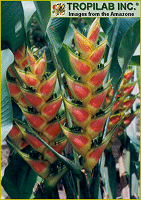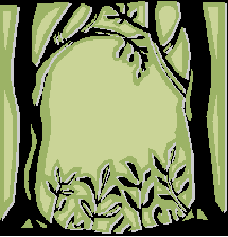
1.
|
Our Project, in order to provide incentive as well as funding, needs a
monetary impulse. Medicine in the rainforest, from the rainforest is a major
wellspring from which we can draw resources and interest from. Viral diseases,
including emerging and chronic viruses, are an increasing worldwide health
concern. As a consequence, the discovery of new antiviral agents from plants
has assumed more urgency than in the past. A number of native Amazonian
medicines of plant origin are known to have antimicrobial and anti-inflammatory
activity, although only a few have been studied for their antiviral properties
and immunomodulating effects.
|
Co-evolution between plants and their natural enemies including insects,
bacteria, fungi, nematodes, animals, humans, and viruses is considerably
more far reaching than current theories of reciprocal interactions suggest.
Counter-resistance, genetic adaptability, polymorphic immune capacity, and
pleomorphism among microbial agents allow for immense diversity of species
and endless biochemical possibilities. It is that richness we will capitalize
upon, in order to promote a use and reason for our research in the forest.
In order to adapt to environmental insults, plants produce a vast number
of natural products that have antimicrobial and immunomodulating potential.
These include isoflavonoids, indoles, phytosterols, polysaccharides, sesquiterpenes,
alkaloids, glucans, tannins, a variety of vitamins and trace minerals that
function as antioxidants and co-enzymes, and many other phytochemical substances.
In addition, there are a number of parallels between plant immunological
activity and the immune systems of mammals, including adaptive mechanisms
for viral resistance. The Amazonian region is among the earth's richest
zones of biodiversity. It includes plants, animals, insects, as well as
microbial organisms, and is one of nature's perfect evolutionary laboratories
for plant biology.
There are two ways natural products are selected for investigation.
The classical method is laboratory based and relies on previous taxonomic
findings, phytochemical factors, immunopharmacological studies, and random
screening methods. The other, which is gaining popularity among investigators,
is searching traditional texts and herbal medicine usage, including oral
interviews with traditional indigenous healers the ethnobotanical route.
In one study, researchers found that an ethnobotanically driven approach
led to a higher percentage of active compounds isolated than the standard
high volume random screening method, reporting a 125-630 times more effective
yield depending on the type of virus.
Largely due to the AIDS epidemic, an imperative for developing effective
antiviral has generated considerable activity in anti- viral screening during
the last two decades. However, the search for antiviral compounds has not
been easy. Relatively few antiviral drugs are available, and those approved
for use often have high side-effect profiles and exhibit the potential to
cause rapid resistance among targeted viral strains. An antiviral must meet
three criteria: (1) it must inhibit the virus completely without affecting
the host cells, (2) it must have a broad range of activity, and (3) it must
not be immunosuppressive
A number of plant substances have been found to meet the basic criteria,
and screenings have been performed on several thousand plant extracts and
other natural products. Three have been well studied: Croton lechleri, Phyllanthus
niruri, and Uncaria tomentosa. Among these, Croton and Phyllanthus have
received more attention than Uncaria for their antiviral properties. Extensive
research has been conducted on Curcuma, primarily for its anti-inflammatory
effects and on inhibition of HIV, although primarily with species found in
India
and China. Mangifera has been studied for its anti-inflammatory and
antiviral activity against herpes simples II virus, although primarily
with Cuban, Chinese, or Indian species. Although considered to have antiviral
activity and extensively used for ceremonial purposes among Amazonian healers,
few studies have been performed on the antiviral properties of the tobacco
plant, Nicotiana tabacum.
Immunomodulating activity refers to biological or pharmacological effects
of compounds on humoral or cellular aspects of the immune response. The
human immune response is a highly complex and extraordinarily sophisticated
system involving both innate and adaptive mechanisms Studies of how plant
substances affect immune response employ mechanistic bioassay methodologies.
Basic research on natural substances with immunomodulating properties is
performed by assays primarily carried out on the stimulation of nonspecific
immunity of the innate response, such as the efficiency of granulocytes,
macrophages, complement, and natural killer cells, and their effects on phagocytosis,
lymphocyte proliferation, and T-lymphocyte migration macrophage activation
by beta-1,3-D-glucan. More recent research on immunomodulating substances
includes studies on cytokine production by macrophages such as interleukin-1
(IL-1),` interleukin-6 (IL-6), and tumor necrosis factor-alpha (TNF-a).
Plants from tropical rainforests represent a rich source of potential
immunomodulating substances and leads from ethno botanical practices have
been the primary source of plant selection in recent years
1. Picture from: http://www.tropilab.com/images/amazone/




